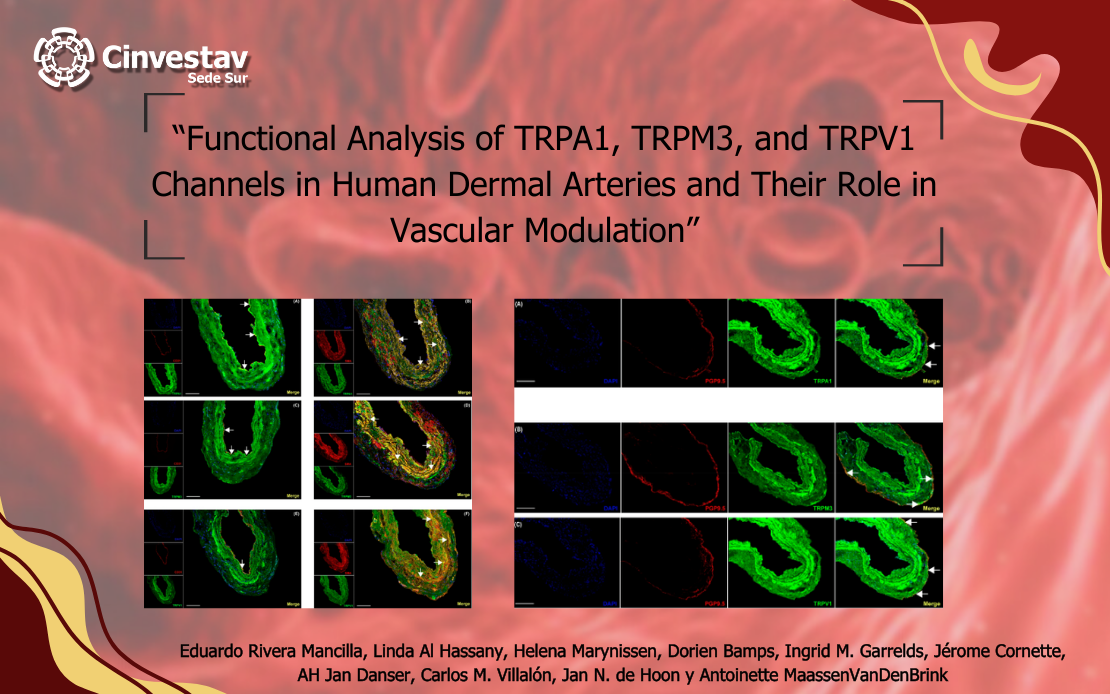Carlos Villalon- Functional Analysis of TRPA1, TRPM3, and TRPV1 Channels in Human Dermal Arteries and Their Role in Vascular Modulation

25 de enero del 2024
Invitamos a leer el artículo: " Functional Analysis of TRPA1, TRPM3, and TRPV1 Channels in Human Dermal Arteries and Their Role in Vascular Modulation", realizado por el Dr. Carlos M. Villalón, Investigador de Cinvestav Sede Sur
Autores:Eduardo Rivera-Mancilla, Linda Al-Hassany, Heleen Marynissen, Dorien Bamps, Ingrid M. Garrelds, Jérôme Cornette, A. H. Jan Danser, Carlos M. Villalón, Jan N. de Hoon y Antoinette MaassenVanDenBrink
Abstract:Transient receptor potential (TRP) channels are pivotal in modulating vascular functions. In fact, topical application of cinnamaldehyde or capsaicin (TRPA1 and TRPV1 channel agonists, respectively) induces “local” changes in blood flow by releasing vasodilator neuropeptides. We investigated TRP channels’ contributions and the pharmacological mechanisms driving vasodilation in human isolated dermal arteries. Ex vivo studies assessed the vascular function of artery segments and analyzed the effects of different compounds. Concentration–response curves to cinnamaldehyde, pregnenolone sulfate (PregS, TRPM3 agonist), and capsaicin were constructed to evaluate the effect of the antagonists HC030031 (TRPA1); isosakuranetin (TRPM3); and capsazepine (TRPV1). Additionally, the antagonists/inhibitors olcegepant (CGRP receptor); L-NAME (nitric oxide synthase); indomethacin (cyclooxygenase); TRAM-34 plus apamin (K+ channels); and MK-801 (NMDA receptors, only for PregS) were used. Moreover, CGRP release was assessed in the organ bath fluid post-agonist-exposure. In dermal arteries, cinnamaldehyde- and capsaicin-induced relaxation remained unchanged after the aforementioned antagonists, while PregS-induced relaxation was significantly inhibited by isosakuranetin, L-NAME and MK-801. Furthermore, there was a significant increase in CGRP levels post-agonist-exposure. In our experimental model, TRPA1 and TRPV1 channels seem not to be involved in cinnamaldehyde- or capsaicin-induced relaxation, respectively, whereas TRPM3 channels contribute to PregS-induced relaxation, possibly via CGRP-independent mechanisms.
Keywords: CGRP; human dermal artery; TRP channels; pharmacological mechanisms; vascular tone; vasodilation